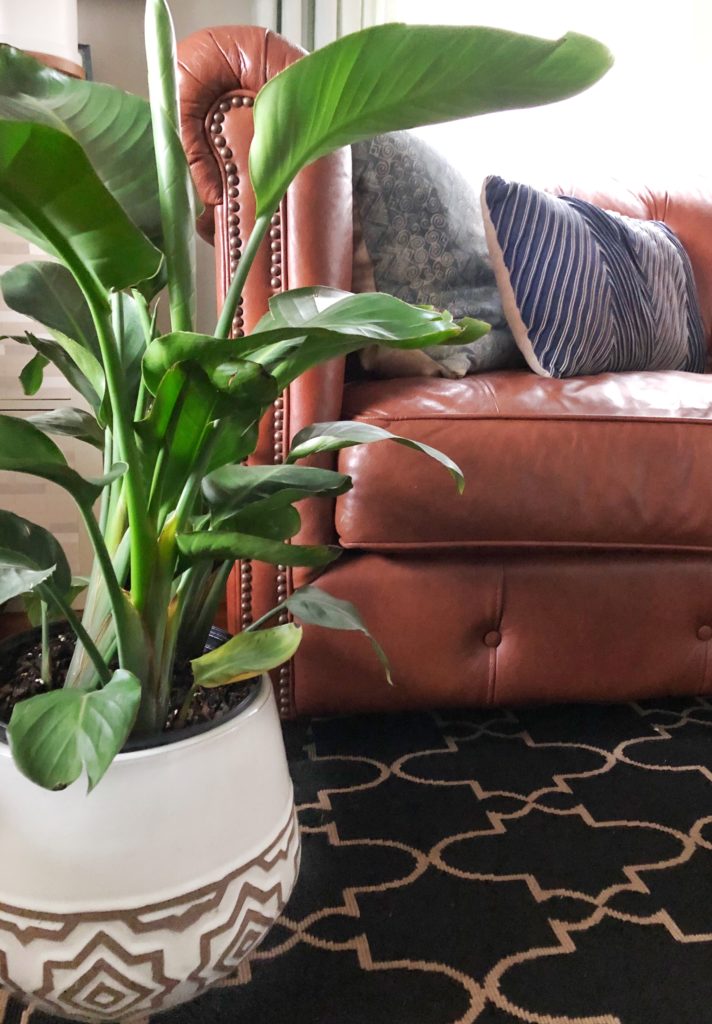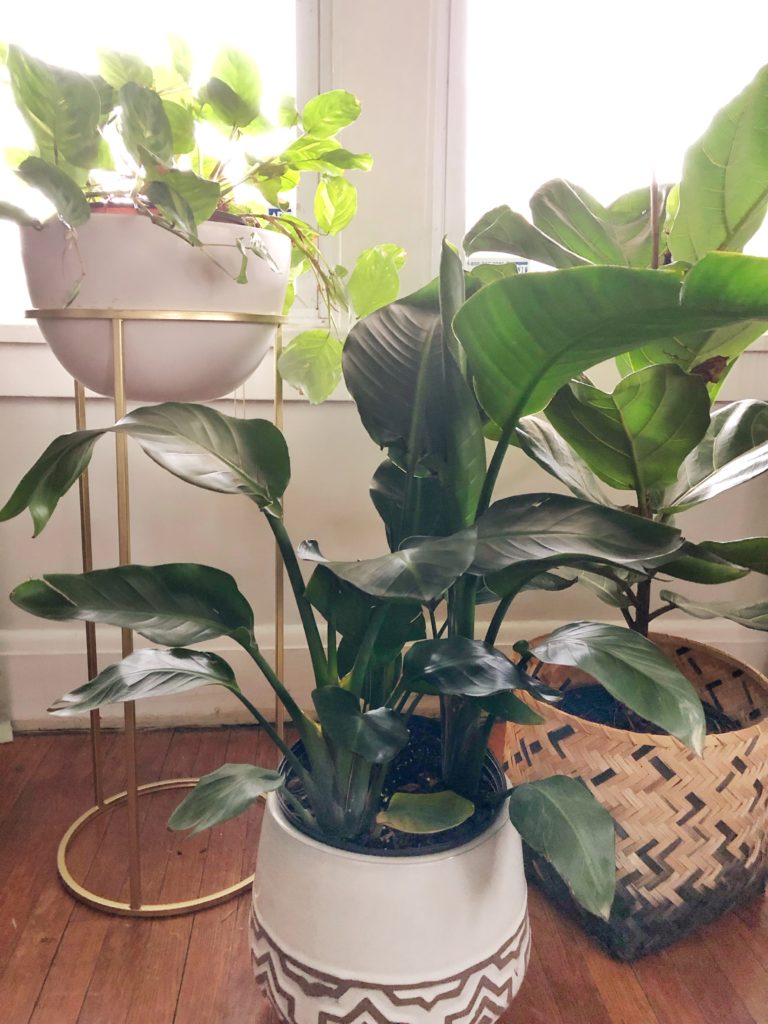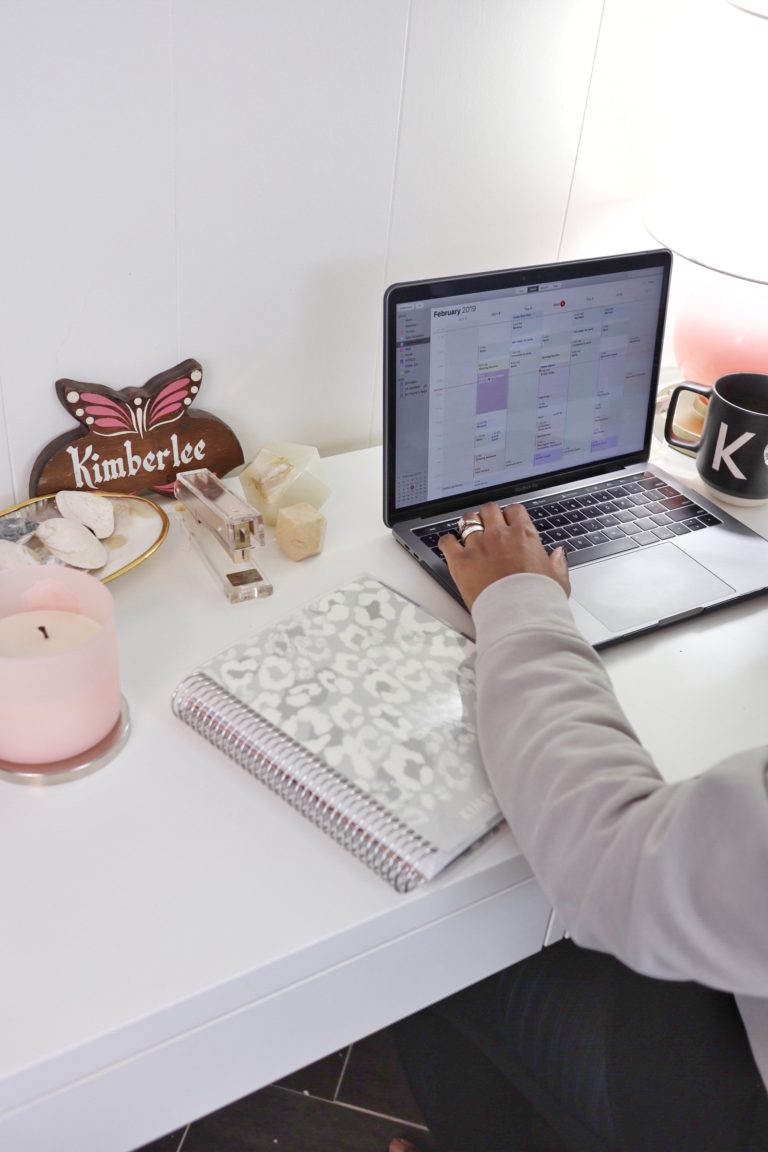Plant Care Tips – for beginners & pros

I have a thing for plants. I would not at all call myself a green thumb but I do know a thing or two about keeping them alive…for the most part :). So I thought I’d share some plant care tips that would be helpful to both the novice & the experienced gardener.
In this video, I’m providing a bit more detail about the topics I’ve outlined further down in this post.
Plant Care Tips Video
3 Basic Needs
When it comes to taking care of plants, there are 3 main components that they need: Light, Water, and Feeding. Each plant is different in terms of how much they need of each. It’s always a great idea to research the species of plant you are most interested in to get a good understanding of what the plant would require from you.
Sunlight
The first important thing plants need would be sunlight. Some plants require 8 hours of full sunlight, while others would die with that much sunlight and may only need 1-2 hours of indirect light. There are, also, many artificial light sources that you can use for indoor plants, like daylight bulbs, fluorescent lights, and incandescent lights.
One of the best pieces of advice I’ve ever received on choosing plants is to pick a plant for the space you have in mind, not the other way around. Don’t pick a plant and then try to determine where to put it in your space. For example, if you have a window that receives full sun for most of the day, pick a plant for that spot that requires bright light. If you have partially shady spot in your room, you’ll want to choose a plant that only requires low light.
No matter where you purchase the plant, many of them will come with a hangtag or little card that outlines the needs of the plant. It will list the ideal light level, temperatures, feeding, etc. It’s important to remember, though, that these are only guidelines. There are many plants that may be listed as needeing medium light, and people have had great success growing them in lower light areas. It just may be the case that they do not grow as fast, do not flower, or do not produce as large leaves as they would in brighter light, but the plant is still healthy and flourishing otherwise.
Water
The next basic need for plants is water. And this is probably just as important as light. It’s also just as varied as light, in terms of plants needing more or less water depending on the species. Many plants will actually let you know they need water because the leaves will tend to droop a little lower when the soil is dry. Some plants rebound quickly and perk up once watered. However, other plants might not bounce back as easily, so it’s important to have a general understanding of how much water your particular plant needs.
In order to find out the optimal water needs and light needs for a plant you’re interested in just Google it. There’s so much information out there on hundreds of varieties of both indoor and outdoor plants online. A quick search will provide you with a number of sources to gather a better understanding of how to care for your particular plant.
When starting out, remembering to water plants can be a big deterrent for many people. Because you aren’t in the habit of watering them yet, we might tend to neglect them. But just like with establishing any new habit, you might have success if you pair this task with another habit that’s already fully established for you. If you need to put out the recycling every Wednesday, pair those tasks in your brain so that you’ll know when it’s time to put out the recycling, it’s also time to water the plants. Or choose some other weekly or biweekly task where that would work for you.
Feeding
The last need for plants is feeding. They actually can thrive for some time without fertilizers but it is a great idea to feed them a little fertilizer during their growing periods, which is typically through the Spring & Summer. Many plants go into a dormant or semi-dormant phase during the colder months, so they may not need as much feeding or watering even during that time. There are many different fertilizer formulas to choose from, but I like to stick to a basic all-purpose plant food, like this one, that combines a general mix of nitrogen, phosphorus, and potassium (NPK). That way you can’t go too wrong because you’re feeding the plant a balanced blend of the nutrients it needs. I’ve also used this to help boost my plants’ vitamins from time to time.
It’s as simple as that!
Those are the three main components that make up the basic plant care tips for keeping your houseplants thriving. Like I mentioned earlier, Google is a great source of information to provide all the basic requirements and information on any kind of plant imaginable. You can always start by doing a basic search based on the spot you have in mind for the plant in your home.

Things to Remember
Bouquet Plants
There are also some plants that would be considered bouquet plants that really cannot be expected to live too long and if they do, they might not remain pretty for very long. It’s similar to purchasing a bouquet of flowers. You buy them with the full knowledge that they will surely die eventually. So with those, it’s best to know what you’re getting into from the start and not spending a ton of money on them since they may not last more than a year. Maidenhair ferns are one plant that comes to mind for me. Many people just cannot get them to last too long.
Pests
The possibility for pests is important to note here, too. A few of the more common ones are fungus gnats and spider mites. There are fungus gnats that come around when your soil is kept too wet. Airing the soil out can help get rid of them. For spider mites, you might notice tiny webs between the plant leaves & stems. Rinsing the plant well and soaking it in either a storebought or home made solution can easily get rid of those. I don’t have experience with any others but it’s extremely important to inspect the plant before you bring it home. Checking to see if little bugs are flying around or if there’s webbing around stems, you’ll know right away not to bring that plant into your home.
Don’t be intimidated
And last but finally not least, relax. These plant care tips cover all the basics you’ll need to know. There is, however, still a learning curve sometimes with plants. Some might die. Some might not. Have fun exploring and using them to add some lush vibrancy to your space!





